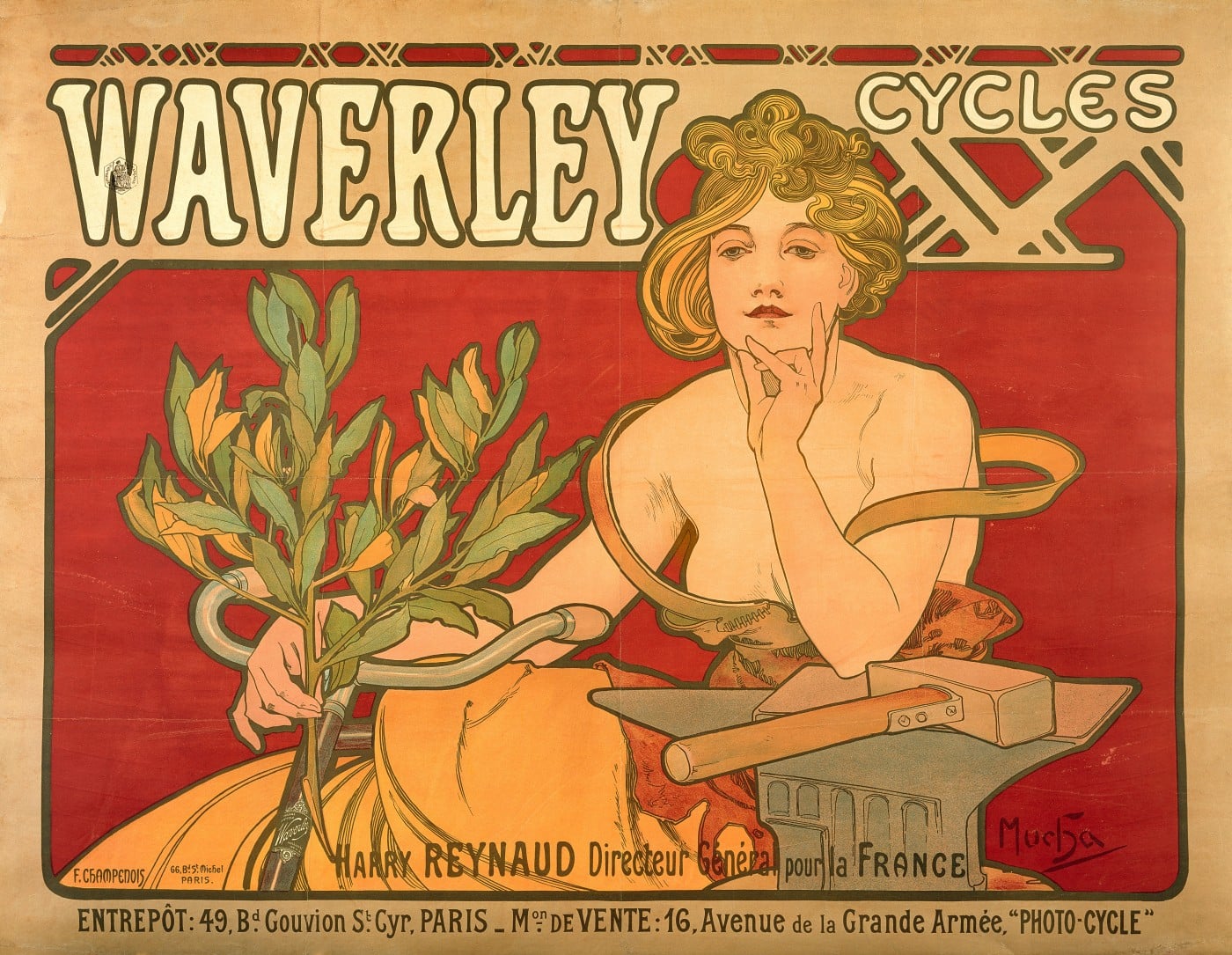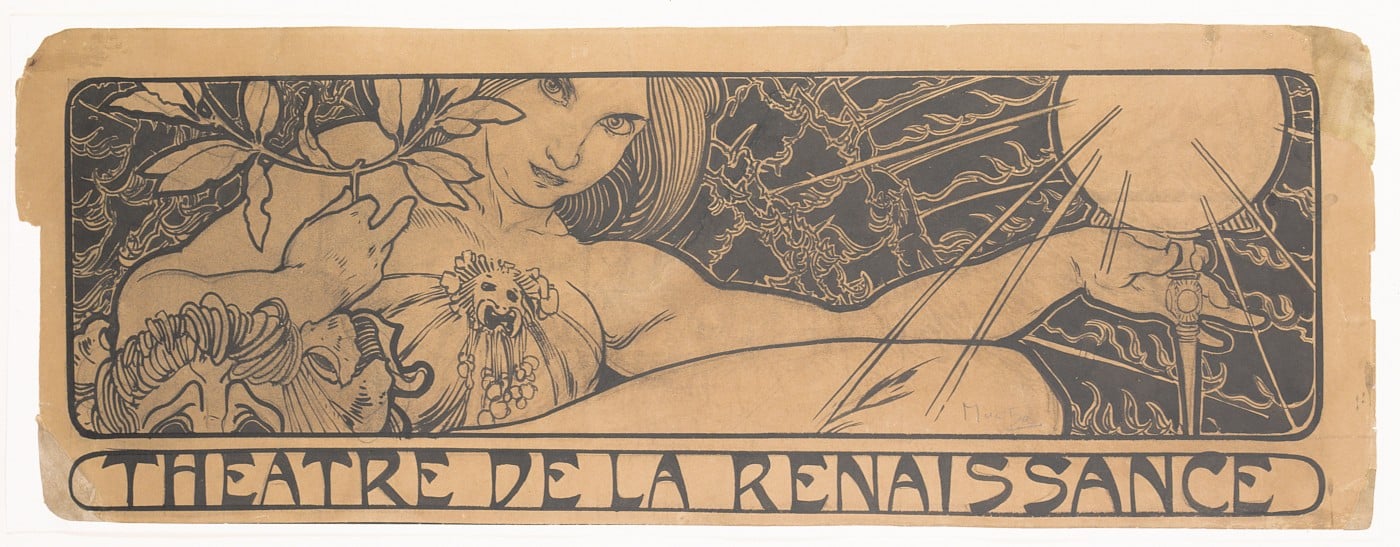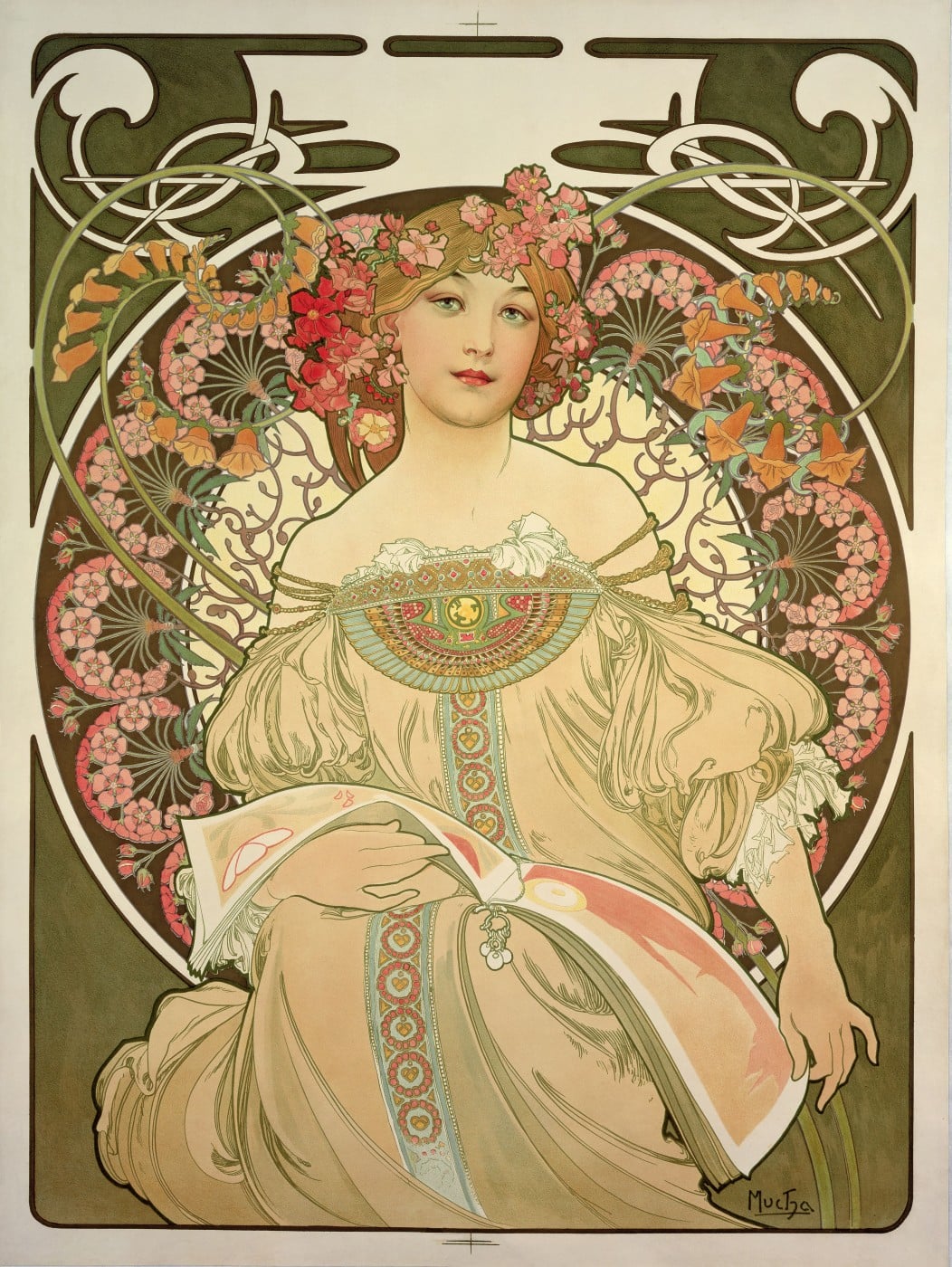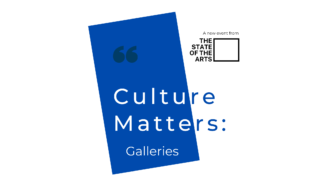
In Quest of Beauty celebrates the life and work of Czech-born illustrator Alphonse Mucha (1860-1939) who rose to fame in Paris in the late 1890s through his advertising posters, elegant decorative panels and product advertisements within the realm of the Art Nouveau movement. With a focus on Mucha as a thinker in place of a commercial artist, the exhibition is a delicate and sensitive journey which highlights his importance within art, education, philosophy, politics and advertising.
His work follows a distinct style: the idea of searching for an ideal beauty, and the glorification of such a notion. This is prevalent throughout all Mucha’s artistic and theoretical outputs, through decorative visual representations of beauty and the depiction of the female form balanced with motifs taken from nature. His illustrations often borrow alluring help from curving, circular forms which sweep across the piece with the intention of leading the eye across an array of floral dances which perfectly decorate the idyllic beauty of his muse. Often illustrated in full length with flowing hair, graceful dresses and floral halos, many of Mucha’s posters are so emotive that the viewer could almost imagine the perfume the woman would wear and the way in which she would move. In stark contrast to the beauty ideals found in every fashion magazine and on every social media platform of today, the female form appears realistically portrayed, relying on the decorative background to suggest the air of fantasy. Today, it is often the reverse in which female beauty ideals are communicated.

The exhibition is a serene space with the artwork placed within a comforting sage green setting, complimented by decorative, Art Nouveau-esque patterns which seductively wrap themselves around the spaces. It is easy to become immersed in the surroundings of the exhibition, and the rooms serve as a flowing, dream-like route through Mucha’s history. The beauty quest begins with posters created for actress of the era Sarah Barnhardt, with a focus on the theme ‘Icon and Muse.’ Then comes Mucha’s commercial illustrations for advertising and product packaging for items ranging from cigarettes to biscuit tins, quickly suggesting an air of accessibility within his work. It is impossible to not be captivated by his search for beauty within the large, narrow, and beautifully framed series which are presented throughout the spaces. The viewer is encouraged to relate Mucha’s work to the present day, with space dedicated to a show by the Victoria & Albert Museum in 1963 which lead to Mucha inspired imagery being used in more contemporary culture including magazines, record sleeves and tattoos – areas which many young, creative minds of 2017 can relate to irrespective of Mucha’s style being prevalent in the late 1800s.

Also explored throughout the exhibition is Mucha’s relationship with friend and sculptor Auguste Rodin, and his influence on Art Nouveau in Britain with links to artists working in Liverpool. Also discussed is Mucha’s dedication to creating affordable posters, in a style known as ‘Le style Mucha,’ which became a visual language for communicating his message of beauty to the masses, regardless of class or social status. In relation to this, Mucha declared that he was ‘happy to be involved in art for the people and not for private drawing rooms.’ The Mucha journey continues to highlight photography and his documents décoratifs – a handbook for craftspeople and manufacturers showing analytical study of nature, and their practical use. Mucha was an artist for the people, dedicating his life and artistic career to communicating beauty to everybody. This was demonstrated through his work as a teacher and lecturer, his commitment to affordable art, and the dedication which came after the Art Nouveau period after 1910 on return to Bohemia (now the Czech Republic), creating work around his homeland’s political freedom.
This thoughtful walk through history serves as a reminder of how attitudes towards ‘ideal’ beauty have undoubtedly changed in line with social progress and development today, while allowing the opportunity to appreciate the alluring beauty of Mucha’s style. In the tumultuous and uncertain society often addressed through more contemporary artworks today, the opportunity to engage with art through a peaceful and aesthetically pleasing viewing experience can feel like a welcome break. However, In Quest of Beauty is a chance to choose between an emotive engagement of a theoretical and philosophical nature where thinking is encouraged, or a place where the pieces can be enjoyed as a whimsical and illustrative quest for beauty. This anchors the sense of accessibility which Mucha endorsed and proves his work is still relevant today.




Comments